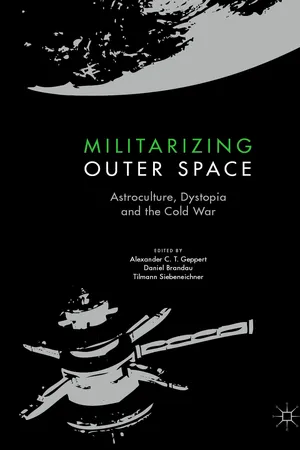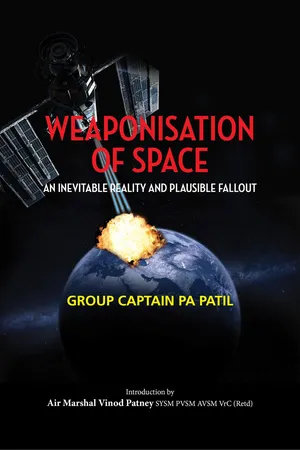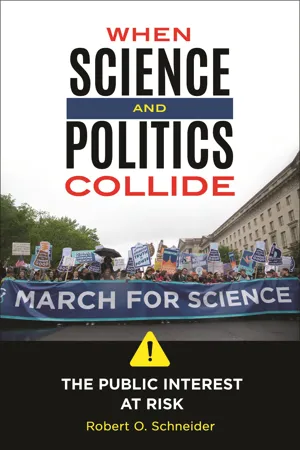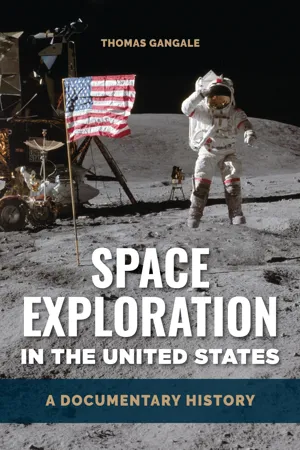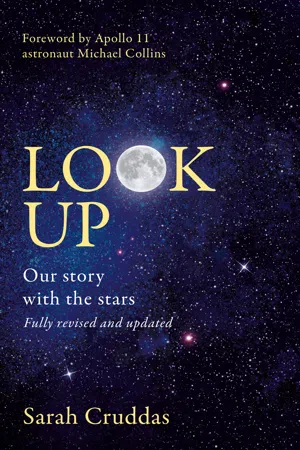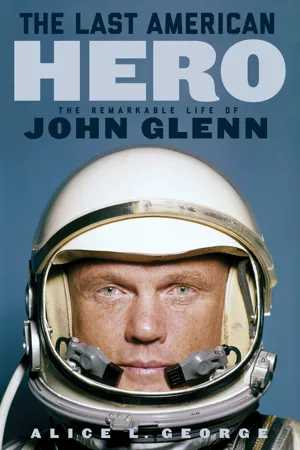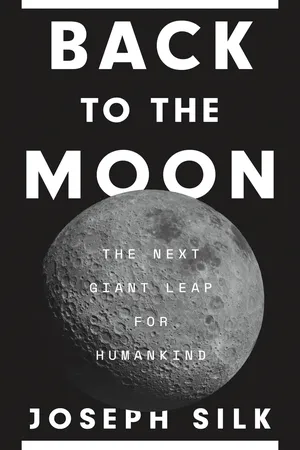History
The Space Race
The Space Race was a competition between the United States and the Soviet Union to achieve significant milestones in space exploration. It began in the late 1950s and culminated with the United States successfully landing astronauts on the moon in 1969. This period of intense rivalry and technological advancement had significant political, scientific, and cultural implications.
Written by Perlego with AI-assistance
Related key terms
Related key terms
1 of 4
Related key terms
1 of 3
11 Key excerpts on "The Space Race"
- eBook - ePub
Militarizing Outer Space
Astroculture, Dystopia and the Cold War
- Alexander C.T. Geppert, Daniel Brandau, Tilmann Siebeneichner, Alexander C.T. Geppert, Daniel Brandau, Tilmann Siebeneichner(Authors)
- 2020(Publication Date)
- Palgrave Macmillan(Publisher)
While one cause was the revelations coming from Russia about the true nature of the Soviet space program, the changing views of the early reach into space broadened considerably. For example, historian Walter A. McDougall in 1985 famously called Sputnik – the event that initiated The Space Race – a ‘saltation, an evolutionary leap’ for humankind. Just twelve years later, in 1997, McDougall disavowed his assessment and instead said Sputnik was an ‘ephemeral episode in the larger history of the Cold War.’ 50 In other words, Sputnik, which rode into space on an R-7 ICBM, was a product of the larger military and nuclear standoff of the Cold War years. Other historians and scholars have re-evaluated Sputnik and its meaning, with many questioning whether the American reaction to Sputnik extended beyond the political, media and military fields. 51 They have taken fresh looks at the Sputnik crisis in the United States, sometimes offering conflicting viewpoints. For example, in his analysis of how Eisenhower used fears of nuclear war to advance his agenda, Ira Chernus has shown that the Sputnik controversy was the result of ‘nearly five years of frightening Cold War rhetoric’ from the Eisenhower administration, while Yanek Mieczkowski, in his sympathetic treatment of Eisenhower’s response to Sputnik, did not raise this issue and noted that Eisenhower was often criticized for passivity. 52 The wider changes to spaceflight history were labeled by Roger Launius as the ‘New Aerospace History,’ which aimed to move beyond concentration on individual rockets or spacecraft to wider social, political and cultural issues relating to aircraft, missiles and space vehicles - eBook - ePub
Weaponisation of Space: An Inevitable Reality and Plausible Fallout
An Inevitable Reality and Plausible Fallout
- PA Patil(Author)
- 2017(Publication Date)
- KW Publishers(Publisher)
Enormous amount of resources were deployed by both the superpowers in scientific R&D. The conflict and competition in the arena of space between the USA and USSR spearheaded the technological revolution and one spectacular event followed another. Human exploration of space began with Soviet cosmonaut Yuri Gagarin orbiting the Earth on April 12, 1961, aboard the Russian spacecraft Vostok. The Soviet space programme went on to achieve a series of other space firsts in the late 1950s and early 1960s: first man in space, first woman, first three men, first space walk, first spacecraft to impact the Moon, first to orbit the Moon, first to impact Venus, and first craft to soft-land on the Moon. The United States, during this period, took a lead in the launching of a weather satellite, spy satellite, geostationary satellite, satellite navigation system, and spacecraft docking. The United States’ greatest success came on July 20, 1969, with the successful landing of two astronauts on the surface of the Moon with the Apollo-11 lunar-landing programme. 28 This was where the USA regained the prestige lost post-Sputnik, by surpassing the USSR in manned space exploration. During the period 1970 to 1990, various missions for planetary explorations and scientific experiments were undertaken by the USSR and USA. Missions were accomplished by landing unmanned probes, flying in close vicinity, taking close-up pictures and sensing the environmental conditions of Venus, Mars, Jupiter, Saturn, Neptune and Sun. Competition, healthy or unhealthy, drove one event after another and the pursuit for attaining space supremacy was unremitting. Space Assets and Societal Fallout The advances in scientific research and technology made by both the USA and USSR in the space field prompted other nations the world over to initiate and accelerate their own space programmes - eBook - ePub
When Science and Politics Collide
The Public Interest at Risk
- Robert O. Schneider(Author)
- 2018(Publication Date)
- Praeger(Publisher)
CHAPTER TWOThe Space Race: A Marriage of Necessity
As he looked into the October sky from his Texas ranch, Senator Lyndon B. Johnson strained to catch a glimpse of “that object which had been cast into the outer reaches of the world.” For LBJ, it represented a “defeat as serious as Pearl Harbor.”1The launching of Sputnik 1 by the Soviet Union on October 4, 1957, rudely awakened Americans to a rapidly developing space age. Sputnik, the world’s first artificial satellite, brought the Soviet Union into the technological spotlight and demonstrated that the country was capable of impressive new technological feats. It also sent a shock wave through the American public. Sputnik caused deep concerns among Americans who had felt a sense of technological superiority amid a postwar economic boom. Was the United States falling behind? Could Sputnik be a play on the part of the Soviets to put arms in space? Is space a necessary place to compete for world prestige?Initial reactions to the Soviet accomplishment included shock, dismay, and alarm. Senator Henry Jackson called Sputnik a “devastating blow to U.S. scientific, industrial, and technological prestige.” Senator Mike Mansfield called for a new Manhattan Project to regain missile superiority over the Soviet Union. Adlai Stevenson, Democratic presidential nominee in 1952 and 1956, expressed a concern shared by many when he said that “not just our pride but our security is at stake.”2 The American public was also quick to react. Six months prior to the launching of Sputnik, only one in five Americans could give a reasonably accurate description of a space satellite. Within weeks after Sputnik, 90 percent knew what a satellite was. Indeed, people the world over demonstrated a keen awareness of and interest in the Soviet accomplishment. Worldwide reaction suggested a growing respect for the Soviets.3Americans typically expressed concerns about falling behind the Soviets technologically, about possible U.S. military vulnerability, about U.S. scientific prowess, and about confidence in American leadership on the world stage. Indeed, there was a sense of urgency in American public opinion and a strongly felt need to respond to what was perceived to be a crisis. For its part, the Eisenhower administration was neither shocked nor alarmed. Defense Secretary Charles F. Wilson called Sputnik “a neat scientific trick.” President Eisenhower himself, initially concerned about the possible military significance of Sputnik, was persuaded that there was nothing that justified concern. The administration’s first public response concluded that there was no need to alter the U.S. research and development program with regard to either space technology in general or to ballistic missiles in particular. The president’s immediate concern was, in his words, to “find ways of affording perspective to our people and so relieve the current wave of near hysteria.”4 - eBook - ePub
Space Exploration in the United States
A Documentary History
- Thomas Gangale(Author)
- 2019(Publication Date)
- ABC-CLIO(Publisher)
In a fundamental sense, the U.S. national space program is itself a “foreign policy” response to an international challenge laid down in October 1957. In that early period after Sputnik I, some interpreted the challenge narrowly—in terms only of prestige. On this premise, space competition seemed to many intrinsically trivial—at most a matter of impressive stunts.Today we recognize that our national security itself is heavily involved in the space competition. Not only our prestige but our capacity for constructive international leadership, our economic and military capacity for technological improvement, depend upon a superiority in science and technology that is understood and accepted. The nations of the world, seeking a basis for their own futures, continuously pass judgment upon our ability as a nation to make decisions, to concentrate effort, to manage vast and complex technological programs in our own interest. It is not too much to say that in many ways the viability of representative government and of the free enterprise system in a period of revolutionary changes based on science and technology is being tested in space.The competition is tough. The U.S.S.R has the ability to concentrate its efforts without public debate and without the regard for individual freedom of choice or living standards which enjoy high priority in our own country. But it does not follow that our own space effort should be similarly concentrated. The implications of space are broad, broader than we can know, and they do not end on the moon. The necessary technologies are enormously demanding and therefore enormously promising. And, whatever we do in space, we are critically dependent upon a thorough knowledge of the space environment. Moreover, the Soviet program, which has appeared to many of us to be so narrow and directed almost exclusively to prestigious exploits, more recently gives signs of broadening to include considerable basic research as well as practical investigations, for example, through the use of weather satellites in which we pioneered. - eBook - ePub
Transforming American Science
Universities, the Government, and the Cold War
- Jonathan Engel(Author)
- 2023(Publication Date)
- Routledge(Publisher)
31It soon became apparent, however, that the scientific and exploratory components of space travel were inseparable from establishing international prestige and projecting an image of technical and military superiority. Over the following seven years, the Soviet Union repeatedly succeeded in a series of space missions, which cemented its reputation for technical superiority in space technology and reinforced the idea that the Americans were lagging in space and in technological prowess generally. Between 1958 and 1960, the Soviets fired three successful probes toward the moon, including Lunik III, which passed behind the moon and transmitted the first images of its far side. In late 1960, the Soviets used their Venik rocket to launch three 1,900 pound probes toward Mars and Venus. (The White House estimated that the United States was still several years away from this feat.)32 By 1963, they had launched a 3,100 pound probe toward the moon,33 which was followed by a 1964 manned launch of a pilot, scientist, and physician, which orbited the Earth 16 times and descended successfully.34 On September 3, 1965, the Soviet Union placed five satellites into the Earth’s orbit, followed by six more on September 18.35 - Some months after returning from space, the crew of Apollo 11 embarked on a goodwill tour around the world. There they heard cries of ‘We did it!’ Not, ‘America did it!’ – ‘We did it!’ For while the Moon landing was of course a definitive show of US technical supremacy in space, and it was an American flag planted on the lunar surface, what the mission and the crew represented was not just one nation, but instead one species – humans. News coverage had talked of ‘Man on the Moon’ and the plaque the astronauts left behind on the surface read, ‘Here men from the planet Earth first set foot on the Moon.’But while seeing people on another world briefly united us and inspired so many to this day and most likely beyond, the story of how we got there is not steeped in unity nor wonder and awe, but instead in division. The Space Race owes its origins to the bloodiest conflict of all time, and it took place against a backdrop of the ongoing threat of all-out nuclear war between two superpowers with deeply conflicting ideologies.The famously audacious challenge to send humans to the Moon (and return them safely to Earth) was laid down by President Kennedy just months after his inauguration. On 25 May 1961, when the president stood before a joint session of Congress and asked them to commit the funds, the US had just 15 minutes of human spaceflight experience, after astronaut Alan Shepard completed a short space mission, landing a matter of miles from where he had launched. Kennedy also called for new types of rockets, as well as weather and communication satellites. It was the dawn of a new era in exploration.‘Now it is time to take longer strides,’ Kennedy told Congress, ‘time for a great new American enterprise – time for this nation to take a clearly leading role in space achievement, which in many ways may hold the key to our future on Earth.’ Kennedy had convinced them that ‘no single space project would be more impressive to mankind’ – Congress voted virtually unanimously in favour of America’s Moonshot. From that speech, the commitment was made: GO for the Moon.The United States had by this time been locked in a ‘Space Race’ with its Cold War enemy the Soviet Union for some years, and when Kennedy made his speech they were losing. This race was not just about scientific achievement; it also represented two superpowers battling to showcase the supremacy of their own ideologies. But it was the Soviets, and not the United Stated as many had expected, who, on 4 October 1957, had launched the first human-made satellite and taken humanity into the Space Age. Named Sputnik (Russian for ‘travelling companion’), it was silver and beach-ball-sized, with four spidery antennas, and completed an orbit of our planet in a mere 96 minutes. Radio operators across the world picked up Sputnik’s sinister cry of ‘beep beep beep’. One reporter described the sound as becoming, in a matter of days, ‘as much a part of twentieth-century life as the whirl of your vacuum cleaner’.
- eBook - ePub
The Last American Hero
The Remarkable Life of John Glenn
- Alice L. George(Author)
- 2020(Publication Date)
- Chicago Review Press(Publisher)
4RACING TOWARD SPACE
T he Cold War found a bloodless battlefield in the frigid vacuum of space. Neither the United States nor the Soviet Union wanted to risk a direct military confrontation that might trigger a disastrous nuclear war; therefore, space became the Cold War’s most visible and most tangible field of combat.Shining as it moved across the night sky, Sputnik and its more visible spent rocket, which also orbited, seemed to mock Americans and flaunt Soviet superiority in late 1957. A second Soviet satellite entered orbit just a month later. It circled Earth for 103 days, though its doomed canine occupant, a Moscow stray named Laika, succumbed within hours.1 When the United States entered the game, TV viewers watched in horror as the US Navy rocket Vanguard exploded spectacularly on liftoff in December 1957.2 Early the following year, the army managed to launch the first US satellite, Explorer 1 . The United States launched five satellites in 1958; three succeeded, and two failed.3In these years, fear acquired a new dimension as Americans wondered whether a totalitarian government could offer greater productivity in science and weaponry as the Germans had in World War II rocketry and as the Soviets were demonstrating in space now. In a way, this question set the course of John Glenn’s future. He had no idea that within a few short years he would become a Cold War personification of democracy—a grinning, freckled, balding man who would make Americans feel like winners again.On October 1, 1958, the National Aeronautics and Space Administration set to work. At first, the agency briefly considered opening astronaut selection to adventurers of all types—mountain climbers, deep-sea divers, wilderness explorers—but President Eisenhower, who had planned the World War II Allies’ massive 1944 D-day invasion of German-occupied France, knew something about efficiency, and he identified a better way to choose. He recommended limiting the list of candidates to military test pilots,4 all of whom had some engineering training and experience dealing with unexpected problems. And so the call went out for military volunteers to serve in a civilian space agency. Characteristically, Glenn leaped at the opportunity.5 - eBook - ePub
- Bradley Lightbody(Author)
- 2005(Publication Date)
- Routledge(Publisher)
On 14th October 1962 the missile race dominated world headlines when U2 reconnaissance photographs of Cuba revealed the construction of missile sites. The Soviet Union was attempting to gain an advantage in the nuclear-missile race but to the United States it was tantamount to war and the resulting crisis took the world to the brink of nuclear war.ANALYSIS (1): WHY AND TO WHAT ADVANTAGE DID THE SOVIET UNION INITIATE THE MISSILE RACE?
The Soviet Union was intimidated by the United States’ post-war nuclear monopoly and sought at least parity, if not a military and diplomatic advantage by directly targeting the United States with nuclear missiles. The related conquest of space, symbolised by Sputnik in 1957 and Yuri Gagarin in 1961, was also a triumph for Soviet technology, but the Soviet advantage was soon eclipsed by the superior resources of the United States.The missile race was an extension of the race to develop nuclear weapons. At Potsdam, July 1945, President Truman ambiguously referred to the development of a new weapon of ‘special destructive force’ in a move calculated to neutralise the Soviet military advantage in Europe. Stalin interpreted the lack of full Allied disclosure of nuclear technology as a threat to the security of the Soviet Union and immediately directed the Soviet physicist Igor Kurchatov to ‘provide us with the atomic bomb in the shortest possible time’.1Stalin had directed few resources into nuclear research during the war years, given the high costs and energy requirements of researching nuclear fission, and consigned the Soviet rocket specialist Sergei Korolev to the Gulag for neglecting aircraft design. Both mistakes were corrected, and under the direction of Beria and the MVD nuclear weapons and missile research were accorded the highest priority.The race for nuclear parity had begun but it was a race many American scientists wanted to avoid in favour of international controls over nuclear research. Samuel Allison, who counted down the Operation Trinity test explosion of the world’s first nuclear bomb in July 1945, warned that in the absence of international co-operation the physicists would abandon nuclear research and ‘devote themselves to studying the colors of butterfly wings’.2 - eBook - ePub
Back to the Moon
The Next Giant Leap for Humankind
- Joseph Silk(Author)
- 2022(Publication Date)
- Princeton University Press(Publisher)
CHAPTER 1The New Space Race
[Space travel] will free man from his remaining chains, the chains of gravity which still tie him to this planet. It will open to him the gates of heaven. —WERNHER VON BRAUN The ultimate purpose of space travel is to bring to humanity, not only scientific discoveries and an occasional spectacular show on television, but a real expansion of our spirit. —FREEMAN DYSONThe Past Half-Century
In 1961 President John F. Kennedy decided that the National Aeronautics and Space Administration (NASA) would land men on the Moon by the end of the decade. His decision was in part a reaction to the first space flight around the Earth by the Soviet cosmonaut Yuri Gagarin. The United States needed to counter. The Soviets already had made a head start in planning for a space station and orbital flights in space. A crewed lunar landing was the most feasible step that the United States could take to reinforce its superiority in space. And national security issues were certainly a factor in the president’s decision.Kennedy took up the gauntlet in an address to the nation a year later, on September 12, 1962:And so began the Apollo program, approved by the US Congress in 1963 to send American astronauts to the Moon. Kennedy, sadly, did not live to see his promise to the nation fulfilled.We choose to go to the Moon in this decade and do the other things, not because they are easy, but because they are hard; because that goal will serve to organize and measure the best of our energies and skills, because that challenge is one that we are willing to accept, one we are unwilling to postpone, and one we intend to win.Various US presidents had weighed in on space exploration before Kennedy. It was Dwight Eisenhower who initially responded to the surprise Soviet launch of Sputnik in 1957. He decided that US space activities should be administered by a civilian agency. Though he assured the public that Sputnik was but “one small ball in the air,” Eisenhower nevertheless saw to it that NASA was established the following year. Spacecraft design and launch facilities were organized. The Mercury program was established to evaluate the feasibility of low near-Earth crewed orbits as a precursor to going further into space. The program culminated in the first crewed suborbital flights. - eBook - ePub
The War of Nerves
Inside the Cold War Mind
- Martin Sixsmith(Author)
- 2021(Publication Date)
- Wellcome Collection(Publisher)
20The Space Race
By mid 1958, the Americans were ready to respond to the blow to their prestige inflicted by Sputnik. The presidential directive to the National Security Council establishing the National Aeronautics and Space Administration, NSC 5814/1, made clear what was expected. NASA must ‘judiciously select’ projects that would have ‘a favorable world-wide psychological impact’.1 Political and scientific think tanks were tasked with assessing what measure of psychological triumph by the US it would take to trump Moscow’s initial successes. The recommendation of the Aeronautics and Space Council was clear: manned spaceflight.To the layman, manned space flight and exploration will represent the true conquest of outer space and hence the ultimate goal of space activities. No unmanned experiment can substitute for manned space exploration in its psychological effect on the peoples of the world. There is reason to believe that the Soviets, after getting an earlier start, are placing as much emphasis on their manned space flight program as is the US.2They were indeed. As early as November 1957, the Soviet ‘chief designer’, Sergei Korolev, had followed up his Sputnik triumph with another first. When Nikita Khrushchev asked if Sputnik-2 could be ready for launch by the fortieth anniversary of the Bolshevik revolution on 7 November, Korolev replied that it could and, what’s more, he could offer something extra – a dog.Khrushchev saw the potential for headlines. His initial scepticism about Korolev’s space programme had evaporated as he witnessed the discomfort it caused the West. He told Korolev to spend whatever it took. Sending a dog into space was the first step towards sending a man, and both Moscow and Washington knew that was the target to aim for. - eBook - ePub
Space Weapons and U.S. Strategy
Origins and Development
- Paul B. Stares(Author)
- 2021(Publication Date)
- Routledge(Publisher)
3Eisenhower and the Space ChallengePerhaps the starkest facts which confront the United States in the immediate and foreseeable future are (1) the USSR has surpassed the United States and the free world in scientific and technological accomplishments in outer space, which have captured the imagination and admiration of the world; (2) the USSR, if it maintains its present superiority in the exploration of outer space, will be able to use that superiority as a means of undermining the prestige and leadership of the United States; and (3) the USSR, if it should be the first to achieve a significantly superior military capability in outer space, could create an imbalance of power in favor of the Sino-Soviet Bloc and pose a direct military threat to U.S. security.The security of the United States requires that we meet these challenges with resourcefulness and vigor. Introductory Note to NSC 5814/1, “U.S. Policy on Outer Space”, 20 June 1958INTRODUCTIONThe period immediately following the launch of Sputnik was a challenging time for the Eisenhower administration. Despite repeated warnings, it was still caught unprepared for the crisis that Sputnik would cause. Public and congressional concern at the implications of the Soviet achievement for the prestige and security of the United States immediately created pressures for an accelerated and expanded space effort. What Eisenhower had hoped would be a relatively leisurely and orderly US entry in space was transformed overnight into a national obsession to wrest the lead from the Soviet Union.This imperative posed additional challenges. New organizational structures and procedures had to be formed to manage the expanded space programme. A complete review of US interests, priorities and goals in the exploration of space was also necessary. Moreover, the exaggerated fears of Soviet intentions after Sputnik spurred a whole range of space weapon proposals to counter the perceived threat. These had to be assessed not only for their military utility and technical feasibility but also for their long-term impact on the future use of space. These, then, were among the most important problems that faced the Eisenhower administration from 1957 to 1960.
Index pages curate the most relevant extracts from our library of academic textbooks. They’ve been created using an in-house natural language model (NLM), each adding context and meaning to key research topics.
Explore more topic indexes
Explore more topic indexes
1 of 6
Explore more topic indexes
1 of 4
